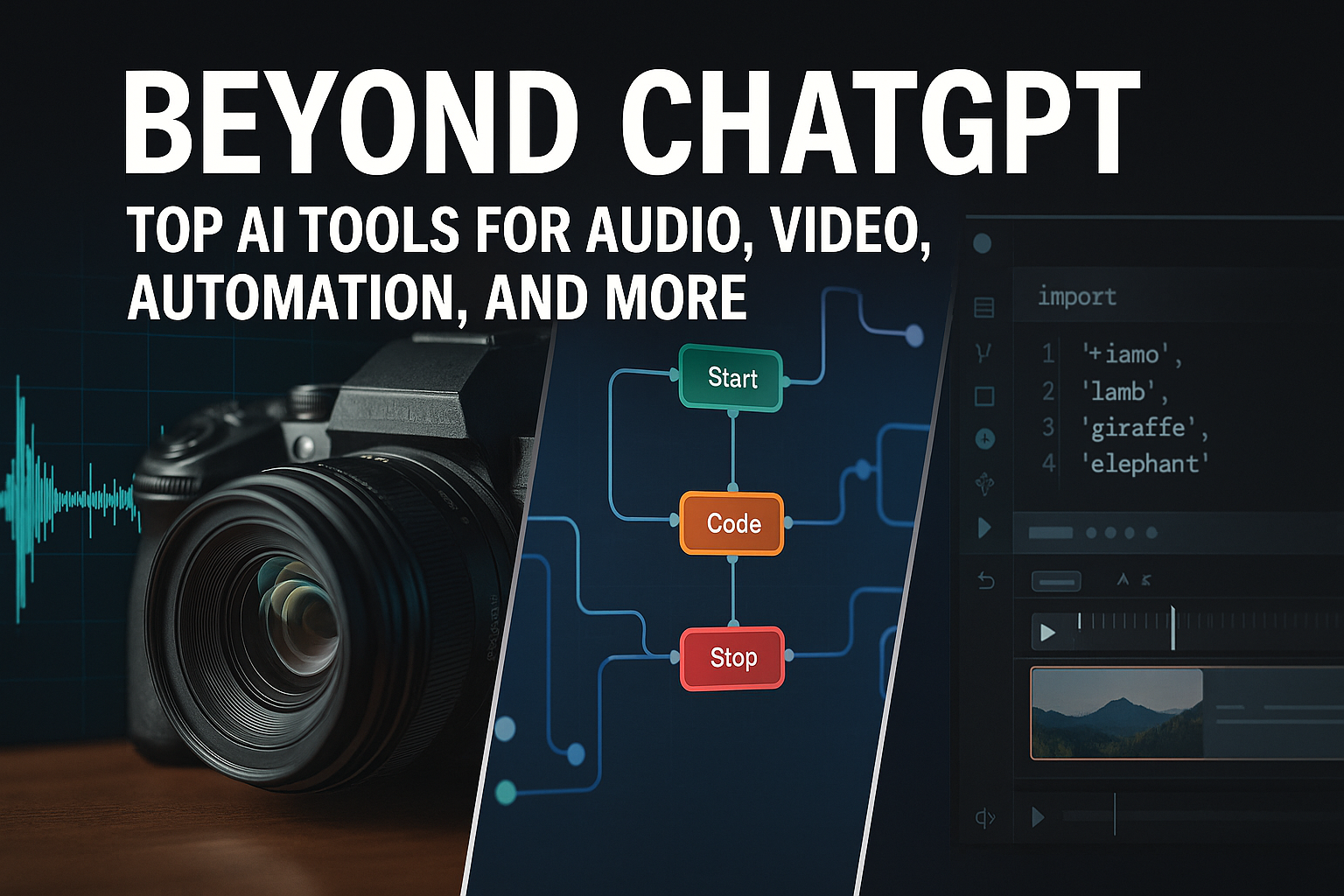AI Glossary: Key Artificial Intelligence Terms Explained Simply

Decoding AI: Your Go-To Glossary of Key Artificial Intelligence Terms
In today's rapidly evolving landscape, understanding the language of Artificial Intelligence (AI) is more critical than ever. Whether you're a beginner exploring the potential of AI, a professional integrating AI solutions into your workflows, or a content creator looking to stay ahead of the curve, grasping key AI terms is essential. This glossary serves as your go-to resource for decoding AI, providing clear, jargon-free definitions of fundamental concepts. Think of it as your quick and authoritative reference point to navigate the complexities of AI, and remember you can always check out our AI News section for the latest information.
The A-to-Z of AI: An Alphabetical Glossary
Navigating the world of Artificial Intelligence can feel like learning a new language. To help demystify the field, here's an A-to-Z glossary of key AI terms, explained simply:
Artificial Intelligence (AI): The broad concept of simulating human intelligence in machines, enabling them to perform tasks that typically require human intellect, like reasoning, learning, and problem-solving.
Algorithm: A set of rules or instructions that an AI system follows to solve a problem or complete a task.
Activation Function: In neural networks, a function that determines the output of a neuron based on its input.
Agent: An entity (software or hardware) that can perceive its environment and act autonomously to achieve goals.
Backpropagation: An algorithm used to train neural networks by calculating the gradient of the loss function and updating the network's weights.
Bias: A systematic error in a model that consistently favors certain outcomes, often due to flawed assumptions in the Training Data.
Chatbot: An AI program designed to simulate conversation with human users, often used for customer service or information retrieval. Consider exploring tools like ChatGPT.
Computer Vision: A field of AI that enables computers to "see" and interpret images, similar to human vision.
Convolutional Neural Network (CNN): A type of neural network particularly effective for processing images and videos.
Data Augmentation: Techniques used to increase the amount of training data by creating modified versions of existing data.
Data Mining: The process of discovering patterns and insights from large datasets.
Deep Learning: A subfield of Machine Learning that uses artificial Neural Networks with multiple layers to analyze data and identify complex patterns.
Embedding: Representing words or other data points as vectors in a high-dimensional space.
Fine-tuning: The process of taking a pre-trained model and further training it on a specific dataset.
Feature Engineering: The process of selecting, transforming, and extracting the most relevant features from raw data to improve model performance.
Generative AI: A type of AI that can generate new content, such as text, images, or audio, based on patterns learned from existing data. Tools like Midjourney are popular examples.
Gradient Descent: An optimization algorithm used to minimize the loss function in machine learning models.
Hyperparameter: A parameter whose value is set before the learning process begins.
Inference: The process of using a trained model to make predictions on new, unseen data.
K-Means Clustering: An unsupervised learning algorithm used to group data points into clusters based on their similarity.
Large Language Models (LLMs): Powerful AI models trained on vast amounts of text data, capable of generating human-quality text, translating languages, and answering questions. Google Gemini and Deepseek are examples of LLMs.
Machine Learning (ML): A type of AI where systems learn from data without being explicitly programmed, improving their performance over time. Read more about AI and Machine Learning.
Natural Language Processing (NLP): A field of AI that focuses on enabling computers to understand, interpret, and generate human language. Tools like Grammarly utilize NLP.
Neural Network: A computational model inspired by the structure and function of the human brain, composed of interconnected nodes (neurons) that process and transmit information.
Overfitting: A phenomenon where a model learns the training data too well, resulting in poor performance on new data.
Optimization: The process of adjusting the parameters of a model to minimize the loss function.
Prompt Engineering: The process of designing effective prompts to elicit desired responses from AI models. For more, consult our guide to prompt engineering.
Precision: The ability of a model to only predict relevant instances.
Recurrent Neural Network (RNN): A type of neural network designed to process sequential data, such as time series or natural language.
Reinforcement Learning: A type of machine learning where an agent learns to make decisions by interacting with an environment and receiving rewards or penalties.
Regression: A type of supervised learning algorithm used to predict continuous values.
Supervised Learning: A type of Machine Learning where the model learns from labeled Training Data, where each input is paired with a corresponding output.
Support Vector Machine (SVM): A supervised learning algorithm used for classification and regression tasks.
Transformer Network: A type of neural network architecture that relies on self-attention mechanisms and is particularly effective for Natural Language Processing (NLP) tasks.
Training Data: The dataset used to train a Machine Learning model. The quality and quantity of training data significantly impact model performance.
Unsupervised Learning: A type of Machine Learning where the model learns from unlabeled data, identifying patterns and relationships without explicit guidance.
Underfitting: A phenomenon where a model is too simple to capture the underlying patterns in the data, resulting in poor performance on both training and new data.
Validation Set: A subset of the training data used to evaluate the model's performance during training and tune hyperparameters.
Vector Database: A database that stores data as high-dimensional vectors, enabling efficient similarity searches.
Zero-Shot Learning: The ability of a model to make predictions on new classes or tasks without any specific training examples.

Featured Explainers: Deep Dives into Essential AI Concepts
Let's dive deeper into some essential AI concepts. These terms are fundamental to understanding the current AI landscape and where it's headed.
Generative AI: This branch of AI focuses on creating new content, be it text, images, audio, or video. Unlike AI that simply analyzes or classifies data, Generative AI brings entirely new creations into existence. Think of tools like DALL-E or Midjourney, which can generate stunning images from simple text prompts. Generative AI is rapidly changing creative fields and opening up possibilities we never thought possible.
LLMs (Large Language Models): These powerful models are the engines behind many of today's impressive AI applications. LLMs (Large Language Models) are trained on massive datasets of text and code, allowing them to generate human-quality text, translate languages, and even write different kinds of creative content. They power chatbots and text generation tools. A common misunderstanding is that LLMs fully understand human language in the same way a human does; instead, they are exceptionally skilled at predicting and generating sequences of words. Their key use cases include content creation and powering sophisticated chatbots like ChatGPT.
Prompt Engineering: The art and science of crafting effective prompts to get the best results from AI models. Because AI models like ChatGPT respond directly to input prompts, the quality and specificity of your prompt can dramatically impact the output. Prompt Engineering is about understanding how to phrase your requests to elicit the desired response from the AI.
Explainable AI (XAI): As AI systems become more complex, understanding why they make certain decisions is crucial. Explainable AI focuses on developing techniques that allow humans to understand and trust AI models. This is particularly important in fields like healthcare and finance, where transparency and accountability are paramount. Without XAI, it is difficult to validate AI-driven insights.
Transfer Learning: This technique involves leveraging knowledge gained from solving one problem and applying it to a different but related problem. For example, a model trained to recognize cats can be adapted to recognize dogs with relatively little additional training data. Transfer learning significantly reduces the time and resources needed to train new AI models, making AI more accessible and efficient.
How to Use This AI Glossary: A Quick Guide
This AI Glossary is designed to be a helpful resource for anyone looking to navigate the complex world of artificial intelligence. Whether you're a complete beginner or a seasoned professional, you'll find value in using this glossary. For beginners, it serves as a quick reference guide to demystify common AI terms in your daily reading or learning. You can use it to understand concepts discussed in AI News articles, or when exploring different AI tools. Professionals and content creators can leverage this glossary as a reliable source for linking and citing accurate definitions in their reports, articles, and presentations. Need to clarify the meaning of a Large Language Model or Prompt Engineering? Just link to our definition! For easy access, we recommend bookmarking this page to quickly look up definitions as needed. By using this glossary, you'll be better equipped to understand the nuances of AI and stay informed about the latest advancements.

Download Our Comprehensive AI Glossary (PDF)
Want to keep this comprehensive AI Glossary at your fingertips, even offline? We've created a downloadable PDF version just for you! This allows you to access key Artificial Intelligence terms anytime, anywhere, without needing an internet connection. Perfect for studying AI fundamentals, referencing during meetings, or simply expanding your AI knowledge on the go. To download your free copy, simply enter your email address below. We promise to only send you valuable updates about the latest in AI News and tools from Best AI Tools.
Just sent a email to admin@best-ai-tools.org
Keywords: AI glossary, AI terms explained, artificial intelligence definitions, machine learning glossary, deep learning terms, NLP explained, generative AI glossary, AI terminology for beginners, artificial intelligence quick reference, computer vision glossary, neural network definition, training data in AI, supervised learning explained, unsupervised learning explained, LLMs definition
Hashtags: #AIglossary #ArtificialIntelligence #MachineLearning #DeepLearning #NLP
For more AI insights and tool reviews, visit our website https://best-ai-tools.org, and follow us on our social media channels!
Website: https://best-ai-tools.org
X (Twitter): https://x.com/bitautor36935
Instagram: https://www.instagram.com/bestaitoolsorg
Telegram: https://t.me/BestAIToolsCommunity
Medium: https://medium.com/@bitautor.de
Spotify: https://creators.spotify.com/pod/profile/bestaitools
Facebook: https://www.facebook.com/profile.php?id=61577063078524
YouTube: https://www.youtube.com/@BitAutor


